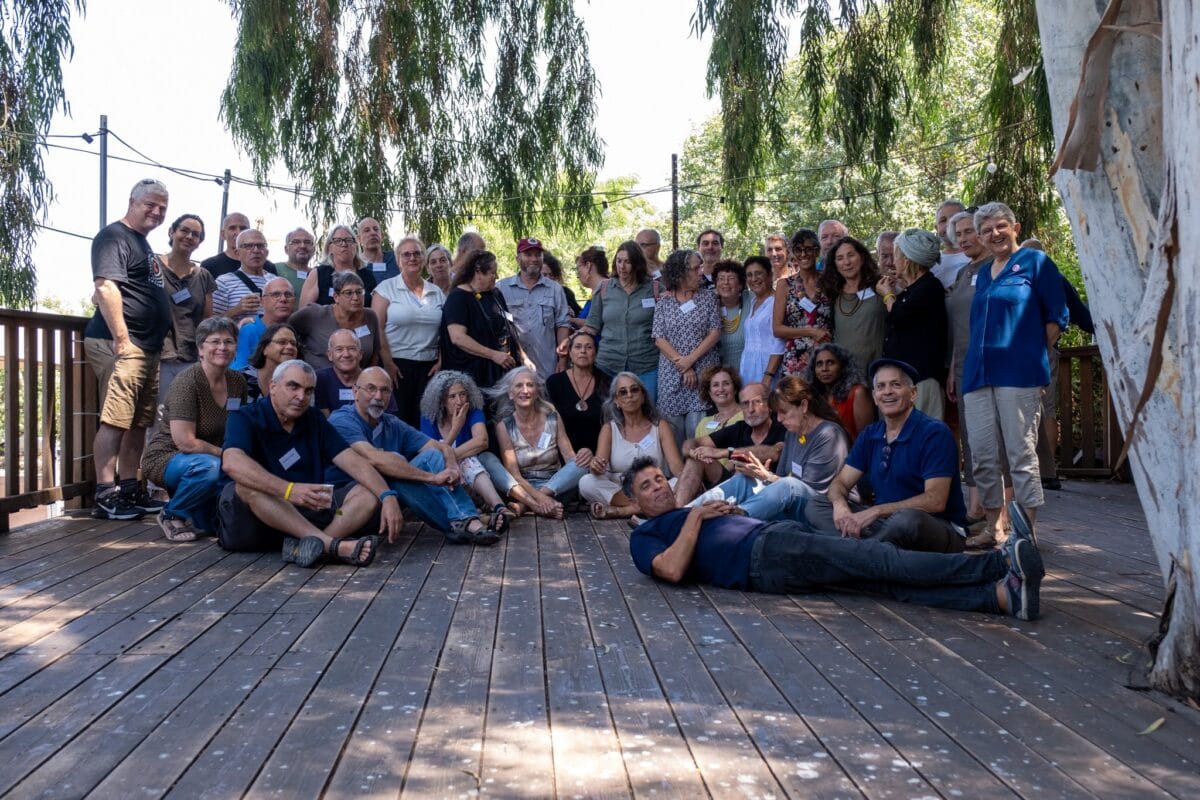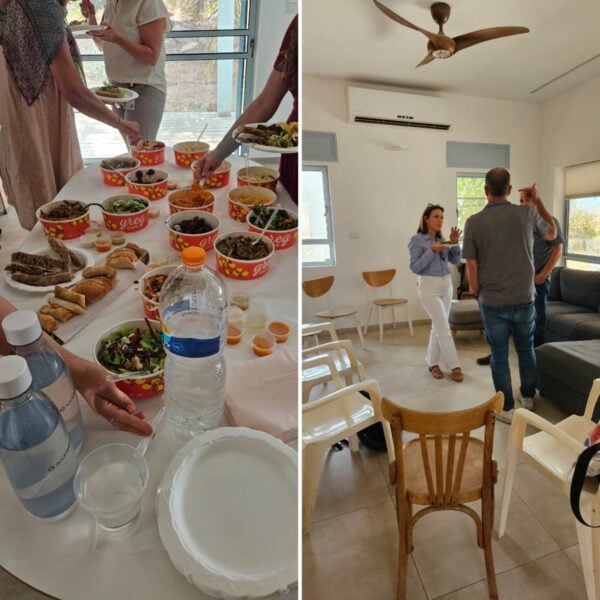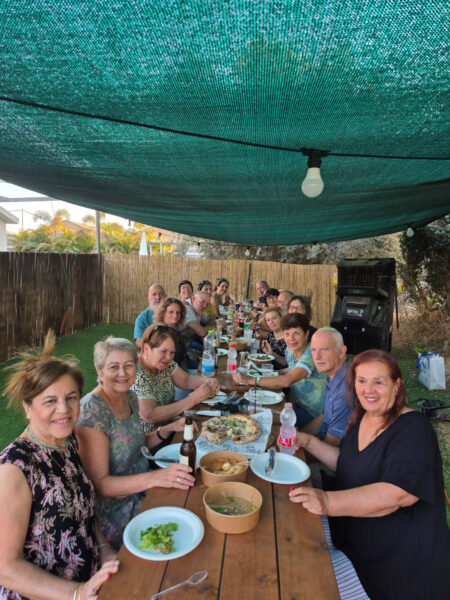The Elul Shnat Sherut 50 Plus volunteers come from may walks of life and backgrounds. What unites them is the common drive to use their professional expertise to support the re-building and resilience of communities in Israel most affected by crisis. This page captures some of their personal profiles and demonstrates how a really good idea can become a reality.
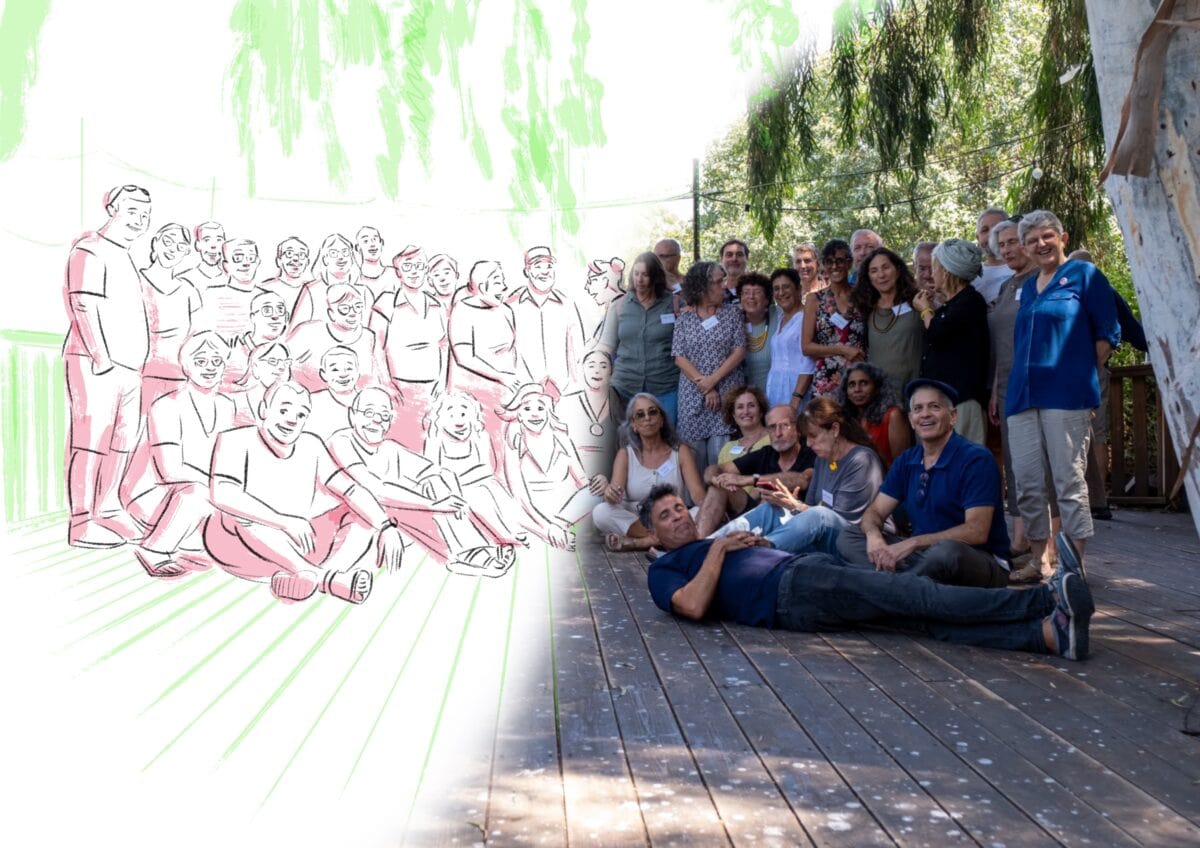
Ahuva and Danni Klein
My partner and I are young retirees, with a long list of dreams that had been waiting patiently for retirement. But suddenly, everything we had planned felt irrelevant. Life took a sharp new turn.
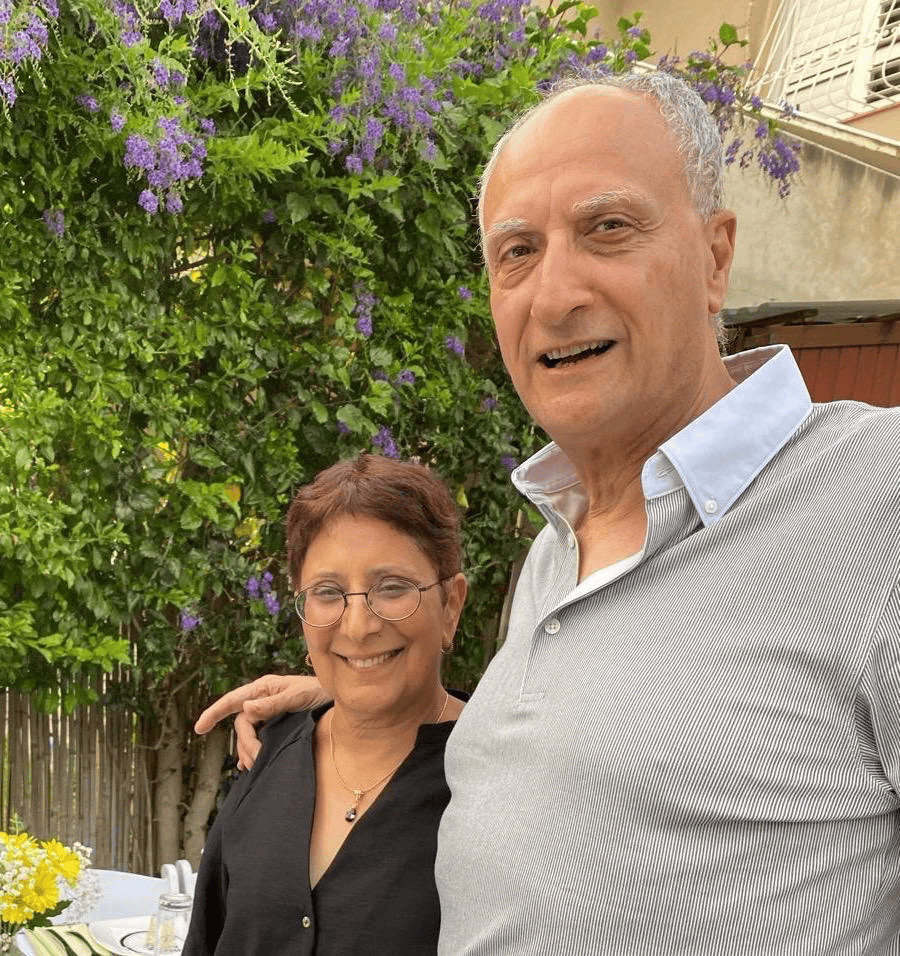
We found ourselves searching every day for something to do -someone to help. A way to support both ourselves and our people during this unprecedented crisis.
I began teaching evacuated children from the south and the north. We volunteered at the Jerusalem command center. Danny went to work at a factory in Sderot. But eventually, we realized we were looking for something more stable, something lasting. We wanted to be part of a meaningful effort – right there in the Gaza Envelope, where people needed us most. And we wanted to do it alongside others who had not lost hope, who were searching for it, and who could still see it on the horizon.
The invitation to apply for the Elul Shnat Sherut 50 Plus – a year of service for adults in the Gaza Envelope felt like the answer. We had found the path. Now was the time. We left behind full lives, future plans, children and grandchildren, and simply said: “We are here. Take us.”
I am a special education teacher, a group facilitator, and director of a cultural center for the deaf and hard of hearing in Jerusalem. My husband is a high-tech professional and licensed tour guide. Through this program, we’ve met dreamers and doers like us from across the country – urbanites, kibbutz and moshav members, secular and religious – united by love for this land and its people, and a deep desire to help nurture new hope through action.
We are now relocating from Jerusalem for a full year of living and volunteering in the Gaza Envelope. We’ve been placed on the Documentation and Heritage Team, supported by the Commemoration and Heritage Department of the Eshkol Regional Council and the Visual History and Documentation Department of Yad Ben Zvi. As part of the “Land of Desire” project, we will help document and preserve both the distant and recent history of the Gaza Envelope communities – recording stories, trauma artifacts, and historical items shared with us directly by the residents.
To extend a hand in commemorating and remembering the life and history of these communities – and the events of October 7 -is painful. But it is also a profound opportunity for healing.
For Danny and me, this is a once-in-a-lifetime chance to do something truly meaningful together, after decades of living parallel but professionally separate lives. We are embarking on this journey side by side, together with an extraordinary group of people who believe, as we do, that this is our home, this is our people, and we have no other.
Aviva Kogus
I was born and raised on Kibbutz Tzora. I went to high school at the Givat Brenner Regional School and served in the IDF as a personnel officer. After my army service, life took me abroad – twenty years in Sydney, Australia – before I returned to Israel in 2011. Today, I live in Jerusalem, close to my two wonderful children and three beautiful grandchildren who live in Rehovot. Professionally, I work as the Finance Manager at the Israel-Australia Chamber of Commerce.
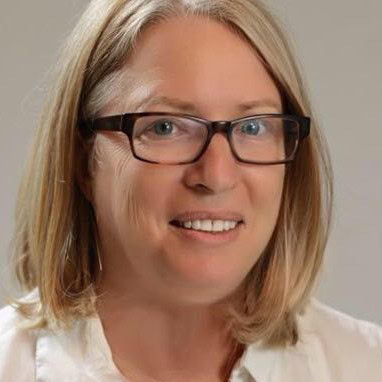
Since returning to Israel, and especially after the events of October 7th, I’ve felt a deep pull to get more involved. I’ve been searching for a meaningful way to contribute – something that would allow me to use my knowledge and skills to make a real impact and help build a better future for us all.
Then one day, a message arrived in one of my WhatsApp groups. It was about forming volunteer groups for a year of service for adults in the Gaza Envelope. The idea struck a deep chord. I had done a Shnat Sherut after high school with HaNoar HaOved VeHaLomed in French Carmel, and the spirit of volunteering has never left me. I signed up immediately.
What amazed me was discovering that over 800 others had signed up too. That, in itself, was deeply moving – what a people we are, and what a spirit of giving lives within us. An idea that began with just five individuals has swept across the country, bringing together people from every corner of Israeli society. The first Zoom call was full of passionate, committed individuals ready to serve.
I bring with me over 40 years of experience in a wide range of roles, including work in the Knesset and various government offices. I also hold a Master’s degree in Business Administration and have volunteered with several organizations over the years. I feel I have much to contribute – and, undoubtedly, much to learn.
This week, we gathered in the Gaza Envelope and began our journey. We met the incredible founders of the initiative, fellow volunteers from across the country, and the resilient residents of the region. Together, we hope to be part of the healing and rebuilding.
For me, Shnat Sherut 50 Plus is not only about giving back – it’s about moving forward. It’s a new chapter, filled with purpose and hope.
Amit Palti
I live in HaSolelim, in the Jezreel Valley, surrounded by the beauty and quiet rhythm of the north. I’m an educator – teaching high school computer science and training lecturers at the Technion in effective teaching methods. I also work closely with education instructors in the Arab community, in places like Umm al-Fahm, Kafr Qasim, and Majd al-Krum.
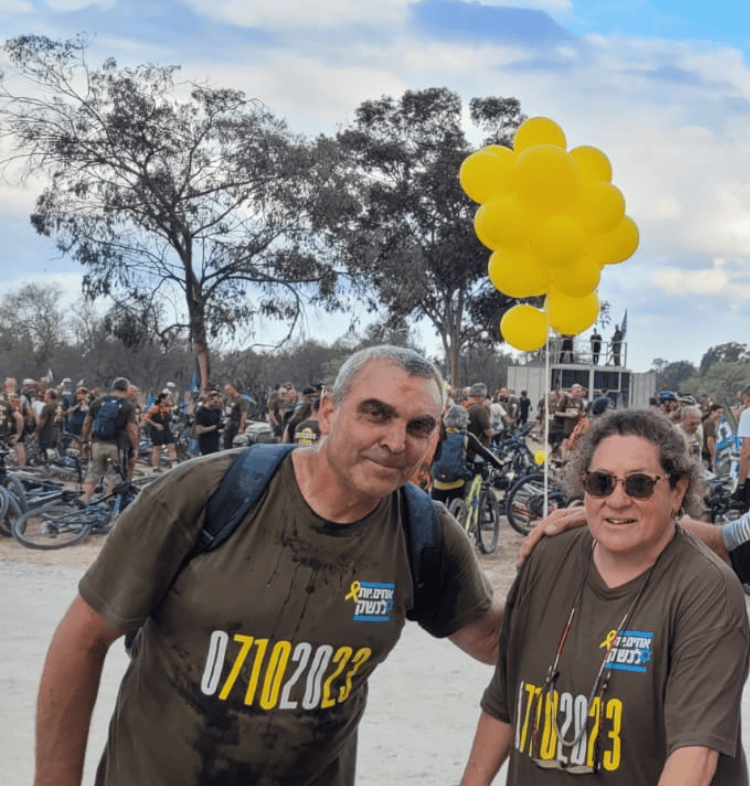
I’m married to Sarit, a psychologist, and we have three sons. Our youngest is 23. Over the past year, two of our boys served in the Armored Corps and in the Field Intelligence Corps, where one of them was a paramedic. Both entered Gaza intermittently. Like many parents in this country, we’ve had more than our share of sleepless nights.
So, why am I here taking part in Shnat Sherut 50 Plus?
Because I want to grow the circle of people for whom I am meaningful.
Because I want to put my abilities and talents to use for good, even if I don’t yet know exactly what that will look like.
Because I want to reclaim a sense of control over my life and time in a world that too often pulls us in other directions.
Because I want to believe that what I do, day by day, carries meaning in the world.
I want to step outside of what is familiar and known – to explore, experiment, and experience new worlds, and to meet people who live differently than I do. I want to expand my circle of close friends and cherished relationships.
I love the idea of a journey. And I love even more that I get to take this one with my partner – my wife, who has walked beside me for the past 40 years.
This year is not a pause. It’s an opening.
Dganit Lux
My name is Dganit Lux, I’m 62 years old, and I live in Haifa (serving my Elul Shnat Sherut 50 Plus in Moshav Maslul).
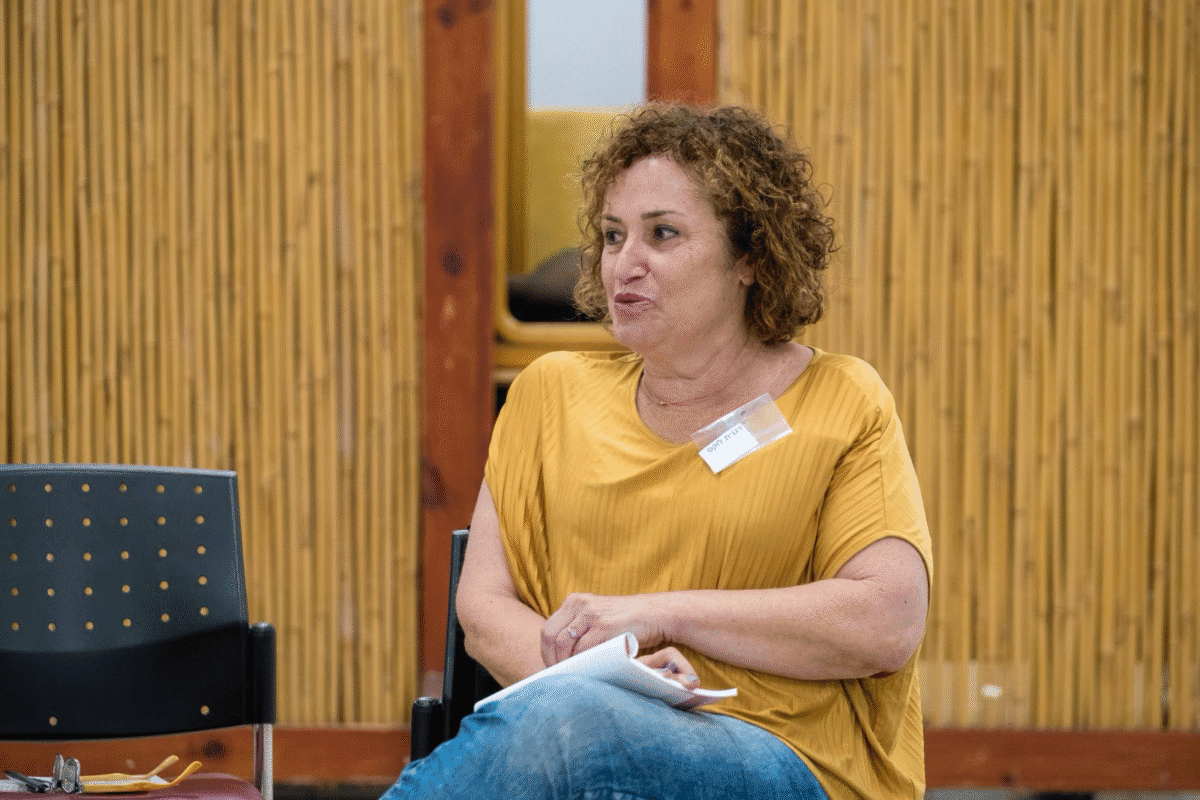
For the past 10 years, I have worked in program management, business development, and volunteering coordination at the “Association for Economic Empowerment of Women” – an organization that has operated for 20 years across Israel, helping women from all sectors of society, with a focus on socio-economic periphery, to establish and manage small businesses for their livelihood.

In addition, for over two decades, I have worked both as a freelancer and as an employee in advertising and graphic design firms, specializing in corporate branding. Simultaneously, I facilitated group sessions – mainly with women, evacuees from the north, and parents of children with special needs, among others.
The first year of Shnat Sherut suited me “like a glove” as I completed my work with the association and searched for my next chapter. My brother, his children, and grandchildren live in Kibbutz Re’im in the Gaza Envelope, and after the severe trauma they experienced on October 7th, I felt compelled to move closer and offer support. It was important to me to get to know, understand, and “connect” with people of a different culture, to be exposed to and integrate into a region I was unfamiliar with, to contribute from the knowledge and experience I’ve gained, and to bring my own “color” to meaningful and ongoing work – as well as to be part of a group that bonds and contributes to a population that has been so deeply affected. Through this, I am also creating change in my own life — through both giving and receiving.
During the day, I volunteer at the Merhavim Regional Council’s community center, contributing to the full rebranding of its departments, marketing and advertising to bring the public back to the wide variety of activities offered. I’m also involved in designing the walls and signage for the new building, designing flyers and promotional materials for conferences, lectures, workshops, and various community mapping initiatives created by Shnat Sherut members throughout the region. I feel that my work is helpful, impactful, and appreciated.
In the afternoons, I also volunteer as a “grandma on loan” to a woman going through a divorce with three young children — keeping them occupied so that she can attend to her responsibilities.
I also encouraged her to gradually renovate her rented apartment, helping her plan the renovations, deliberate, and choose contractors, materials, and furniture to improve the home’s appearance — in collaboration with an interior designer (also from the Shnat Sherut). This initiative has given her a huge boost, and she’s excitedly working on it every free moment, especially during the hours when I’m with the kids.
This initiative has allowed me to build a warm and personal relationship with a family and a home in the moshav where I live, and to help someone truly in need.
Perhaps I can sum up the closeness, the giving and receiving, and the sense of care through a comment from the eldest daughter, who once asked me:
“I love it when you come to kindergarten, but if you come to pick us up – then who picks up your kids from their kindergarten?”
Esti Weisman
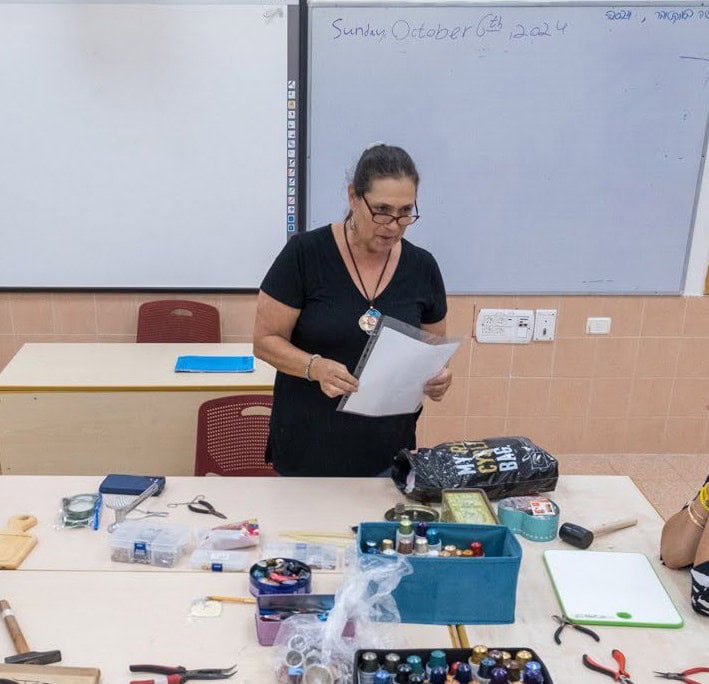
My name is Esti Weisman. I was born in a moshav in the Hefer Valley. Right after finishing my army service, I moved to the north as part of Ariel Sharon’s program – he was then Minister of Agriculture – to “Judaize the Galilee” by establishing settlements together with childhood friends. We founded Mitzpeh Abirim, where we met another couple, Orly and Ilan Morag, with whom we became close friends. Life eventually led them to become members of Kibbutz Nahal Oz.

Over the years, we also moved and eventually became members of Kibbutz Kabri.
I studied primary school education and worked in the field for 19 years, including 6 years as an instructor with the Ministry of Education. In the kibbutz, I transitioned into management roles. I began in the clothing branch, continued to manage the public services of the kibbutz, and then took on the role of managing the social side of kibbutz life (what was once called the kibbutz secretary). Later, I managed the community of Har Halutz – the last position I held before coming here, managing communities in a social capacity.
But what I do here as a volunteer is not managing a community. I’m primarily the administrator for the Meitarim Lachish-Nahal Oz pre-army academy – a mixed secular-religious, male-female program – and I also do whatever is needed at Kibbutz Nahal Oz. Sometimes I sort the incoming mail for the kibbutz, and other times I lead volunteer groups in the various rehabilitation projects, or help with anything that’s needed.
So why am I here?
I already mentioned the friends with whom we founded Mitzpeh Abirim – well, they specifically asked that Uri (my partner) and I come help with the recovery, as they were the only ones living in the kibbutz at the time. And when friends ask – we show up.
